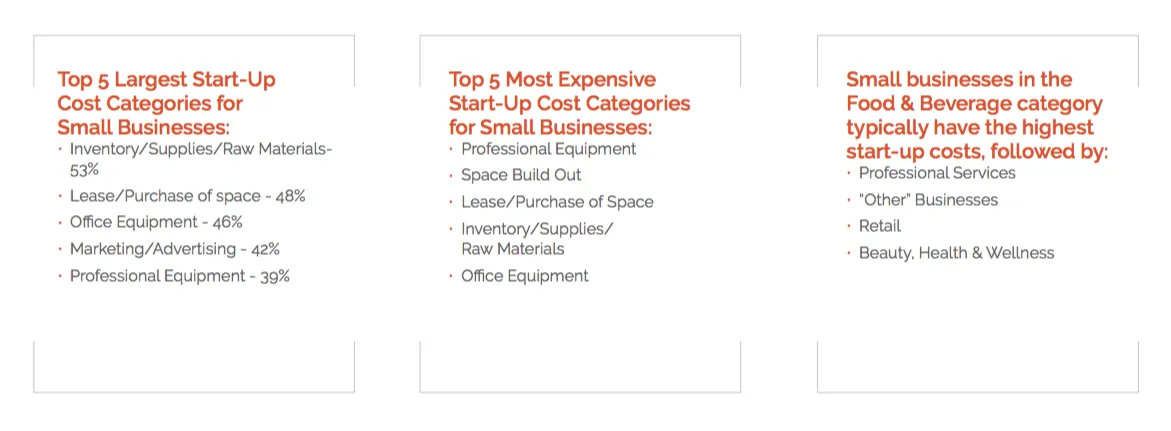Big retail has had a rough few years.
Over 20 major retailers filed for bankruptcy in 2017 — and 2018 isn’t much better. By April 2018, eight retailers had already filed for Chapter 11.
Large retailers are grappling with debt, over-saturation, and fierce online competition. Unfortunately, some of those same struggles apply to smaller retail businesses as well.
Seventy-two percent of business owners agree that small businesses face more challenges today than they did five years ago, according to research conducted by Square. Those challenges range from the rise of big retail players like Amazon to increasing costs for materials, rent, and product.
Despite these difficulties, smaller retail businesses are finding ways to survive — and thrive — in the face of adversity. Here are the biggest challenges identified by the 1,000 small businesses we surveyed, and how you can face them head-on.
Challenge: The Amazon behemoth
These days, it’s easy for consumers to shop around online to find the best price. Sixty-four percent of survey respondents said customers are more focused on finding the lowest prices versus supporting local businesses.
And much of that money is going to the lowest bidder: Amazon. Amazon’s North American sales increased from $16 billion to $80 billion between 2010 and 2016.
Solution: Technology
Seventy-nine percent of sellers believe technology has made it easier for small businesses to compete. So buckle up and starting selling everywhere: in store, online, on social media, even on Amazon. Get your business online with an eCommerce solution, then utilize paid marketing and social media to get the word out about your business.
A solid omnichannel marketing plan can help you reach the ever-growing group of customers who are searching for products on their phones, desktops, via email, and everywhere in between. Just find your niche and tell the world what makes your product and business special.
Challenge: Lack of resources
Starting and running a business is a big undertaking. You may have started a business to fulfill a passion — like baking — but now you find yourself in charge of marketing, and bookkeeping, and payroll, among other things. And you don’t feel prepared.
One out of four small business owners surveyed felt one of the biggest challenges of starting a business was not knowing where to go to get the resources they need.
Solution: SMB allies
Luckily, there are a ton of educational resources from companies and organizations that can help entrepreneurs who are just getting started. We have a number of guides to help you read up and get the momentum going, like how to start a retail business or implement an eCommerce strategy.
Check out resources like the SBA website, then branch out and find people that can be personal resources for you. Look for mentors and find community in fellow entrepreneurs. Working together means you have the ability to learn from one another and grow together.
Challenge: Paying for it
Retail business startup costs can vary greatly — and sometimes they are expensive. Nearly half of business owners surveyed went over budget on their startup costs.
And once things are up and running, there are worries about cash flow. Nearly half of small business owners report that cash flow concerns keep them up at night.
Solution: Get your ducks in a row
Start smart with a detailed plan to estimate as accurately as possible what your startup costs will be. Consider how you might cut costs or improvise to get yourself on your feet without too much cash. You might look for a space with cheaper rent (or share a space) or start with fewer product offerings.
And don’t forget that you don’t need to have all the money up front. There are a number of funding resources available for entrepreneurs (here are some for women and minority-owned businesses).
Whether you’re just getting started or trying to expand, educate yourself on the funding options available to you.
Challenge: Finding the right employees
Forty-three percent of small business owners said finding good employees was one of their biggest startup challenges.
Keeping them is also difficult: A survey from advisory group Korn Ferry found that retail employees have a turnover rate of 65 percent. And replacing employees is expensive — you lose money there, so it’s important to find great talent and retain them.
Solution: Look to your network
Ensure you hire and keep the right employees: Replacing an employee can cost a lot. Decrease the total cost associated with recruiting and training by hiring and retaining the right people. Look for candidates who have good track records, come recommended, and fit in with the company culture.
When the employee is onboarded, make sure you build a relationship and provide paths for employee growth to increase the likelihood that they’ll stay in their role.
Related Articles
How to Start a Retail Business
How Can You Invest More in Your Business?
Retailers Are Lagging in Omnichannel Features
![]()












